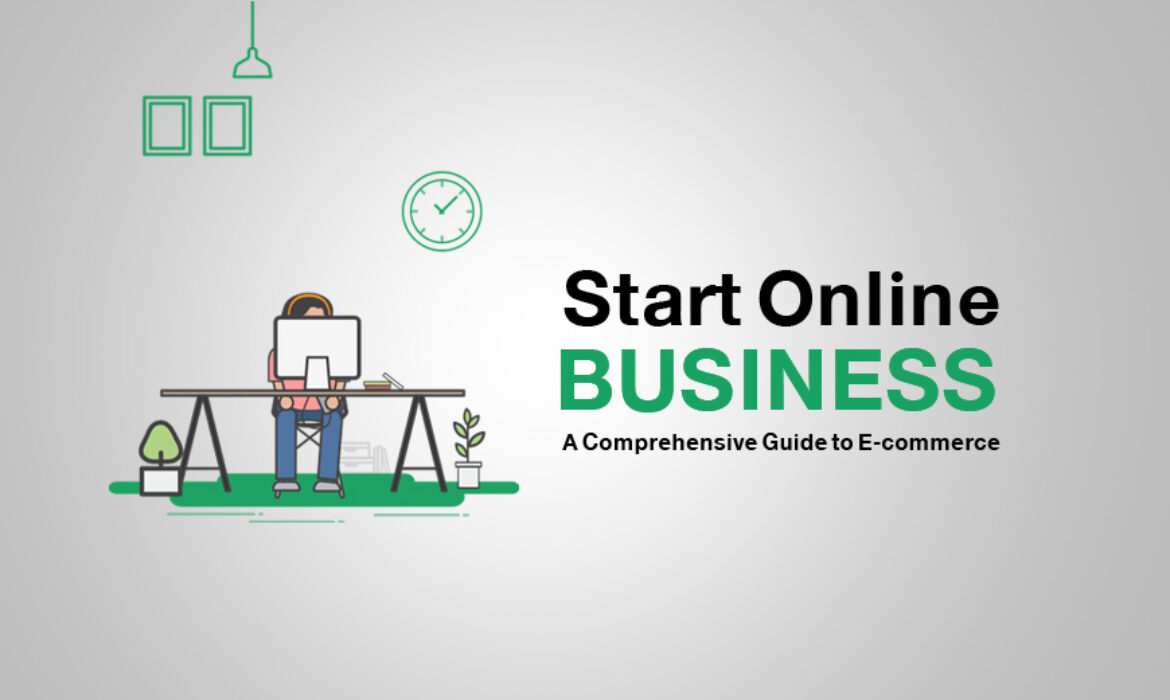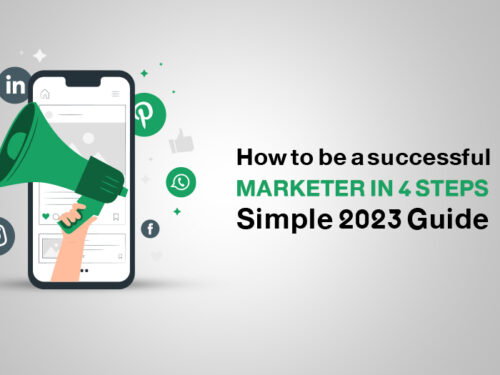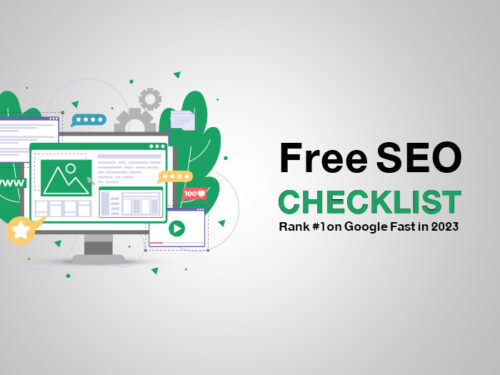Full Guide E-commerce Business for 2023
Welcome to the comprehensive guide to starting an online business! In today’s digital age, establishing a successful online presence is crucial for entrepreneurs and businesses alike. Whether you’re a budding entrepreneur or an established business looking to expand into the online realm, this guide will provide you with valuable insights and step-by-step strategies to kickstart your e-commerce journey. From understanding the fundamentals of e-commerce to mastering effective marketing techniques, we’ve got you covered. Get ready to unlock the potential of online business and take your entrepreneurial aspirations to new heights!
What is E-commerce?
E-commerce — also known as electronic commerce, internet commerce, and online commerce — is a business model which involves transactions taking place on the internet. Stores that sell their products online are e-commerce stores or businesses.
E-commerce should not be confused with e-business. Although sometimes used interchangeably, the terms are not synonymous. E-commerce specifically indicates the transaction of goods and services, whereas e-business refers to all aspects of operating an internet business.
Common Types of E-commerce Websites
- Physical Goods E-commerce Website: Retailers who have brick-and-mortar stores can host their store online to sell to a broader audience. This option is great for retailers who want to increase sales but not physical stores.
- Service-based E-commerce Website: Freelancing, and pure online services, have become a huge trend recently with websites serving as a link between a service provider and their potential clients.
- Digital Products E-commerce Website: Companies that sell digital products like software or video games don’t need physical stores to sell their products as it only involves the customer downloading the product.
- Dropshipping Ecommerce Website: Slightly different to physical goods stores, dropshipping is where merchants sell goods to customers on their online store but they don’t hold any inventory. Instead, they find a supplier to sell goods from, wait for customers to buy these products, and the supplier fulfills the order for them.


How does E-commerce work?
E-commerce works on the same principles as a physical store. Customers come into your e-commerce store, browse products and make a purchase. The big difference is they don’t have to get off their couch to do so, and your customer base isn’t limited to a specific geographic area or region.
Whether you’re selling running shoes or home supplies, you go through the same process when operating an e-commerce website:
- Accept the order. The customer places an order on your website or e-commerce platform. You’ll be alerted that an order was placed.
- Process the order. Next, the payment is processed, the sale is logged, and the order is marked complete. Payment transactions are usually processed through what is known as a payment gateway; think of it as the online equivalent of your cash register.
- Ship the order. The last step in the e-commerce process is shipment. You have to ensure prompt delivery if you want repeat customers.
To show how it works in action, here’s a look at a product’s journey when it is purchased online:
- A customer visits your online shop and browses your products. She settles on a shirt. She chooses the size and color and adds it to the shopping cart.
- An order manager or order management software confirms the product is in stock.
- If the product is available and the customer is ready to check out, she enters her payment card details and shipping information on your payment form or page.
- The payment processor, typically a bank, confirms the customer has enough cash in the bank or enough credit on her card to complete the transaction.
- The customer gets a message on the website that the transaction went through. This all happens in seconds.
- The order is dispatched from the warehouse and shipped. The customer will receive an email that the product is out for delivery.
- The order is delivered, and the transaction is complete.
To be successful at electronic commerce, you should have a comprehensive list of the products and services you sell on your website or marketplace page. The online shop should be easy to navigate, user friendly and aesthetically appealing. It should also be optimized for mobile devices.

What Is E-commerce Business?
An ecommerce business is an organization or individual entity that seeks profits by offering goods or services over the internet. It allows consumers to buy quickly and choose from a range of payment methods to execute the e-commerce transaction. There are many different types of ecommerce businesses, based on the model you choose.
Popular E-commerce Business Models
The beauty of ecommerce is that there are more options for you to choose from. Whereas in traditional commerce the business models were more restrictive. There are four widely known business models, but there are other niche models.
- B2B: The B2B commerce model, business to business, is when a business is selling to other businesses. Alibaba is an example of a B2B business, as their suppliers sell to other businesses. Alibaba prices are extremely low as they’re wholesale prices to allow businesses to make a profit off of their products.
- B2C: The B2C model, business to consumer, involves businesses selling to consumers. If you decide to open your own online retail store, you’ll likely be selling to customers instead of businesses. Amazon, Walmart, and Apple are examples of B2C businesses.
- C2C: The C2C model, consumer to consumer, is when consumers are selling to other consumers. Consumers typically do this through online selling sites like eBay, Craigslist, and Etsy. Many of the sellers on those sites aren’t businesses, but average consumers selling products they own whether second-hand or new.
- C2B: The C2B model, consumer to business, is when a consumer sells their own products or services to a business or organization. This could be a photographer selling their photography to a business.
Examples of e-commerce businesses
- Online retail: Amazon is the crowned champion of retail in the e-commerce world, but you don’t have to be the next Amazon to succeed in this space. You can use resources like Amazon and eBay partnerships to get an online store off the ground.
- Wholesale: One of the best-known wholesale e-commerce sites is Alibaba. While Alibaba does get into B2C sales as well, they have established themselves as a global giant in the B2B space. Businesses all over the world get their goods from Alibaba.
- Dropshipping: Dropshipping is where another company handles your product for you. You create the online space where customers can browse and place orders, but the dropshipping company takes care of the logistics of delivering the goods to the customer. While Amazon does cross into this space, the No. 1 dropshipping company right now is Shopify. You can have a working storefront on Shopify in a matter of hours.
- Subscription: Subscription companies come in many shapes and sizes. The subscription can be for automated replenishment of goods.The subscription can also grant access to a service. Netflix is easily the best example of this type of subscription model.
- Digital products: Digital product stores do not offer physical, tangible goods. They offer digital products, which should not be confused with services. The most common digital product is software. Microsoft is one of the most prolific digital product companies. Digital products can be art, online courses and other “objects” that can be purchased, even though they only exist on a computer.
- Physical products: On Etsy, people make physical objects that they then sell and personally ship. You can see how this is different from retail or dropshipping. A physical products e-commerce business will make the things they sell.
- Services: Services are some of the easiest things to sell online. E-commerce services include tax and accounting, healthcare, legal services, and just about anything else imaginable.
What are the pros and cons of operating an E-commerce business?
Pros of running an e-commerce business
There were lots of reasons to start an online retail business before the pandemic, and there are even more now. Here are seven of the big ones.
- It has fewer overhead costs than a physical store. A big expense of running a retail business is the physical storefront. That means money spent on rent, utilities and other such needs. All of that goes away when you operate an e-commerce store. There is no rent to pay. You don’t have to worry about keeping the lights on, nor do you have to pay on anything.
- You can operate 24/7 with no staff. The internet doesn’t have store hours. It is up 24/7, and so is your e-commerce business. Unlike a physical store with set hours, your site can accept orders whenever your customers are ready to buy, which can drive more business. If you use software to automate most of the process, you won’t need to hire an ordering manager to work the night shift.
- Your business can scale on the fly. There are physical limits to how many products you can stock when you operate a brick-and-mortar store – you only have so much shelf space. There are no such limits with e-commerce; you can add and remove products as you see fit.
- You can reach more customers. Your business may be in New York, but you can sell to customers in California if your store is online.
- It’s easy to track your sales and shipments. Logistics are make-or-break for e-commerce companies. Thanks to the digital nature of e-commerce, it’s easy to track sales and shipments. The benefit of having this information in real time is that it allows you to quickly identify and rectify any snafus.
- It compiles customer data. When you sell products online, you capture a lot of customer data, from addresses to emails. You can also glean information about their purchasing preferences. You can use these insights to target loyal customers with promotions and discounts.
- It’s pandemic-proof. While brick-and-mortar businesses were forced to close their doors amid the pandemic, online businesses were able to stay open. As a result, consumers have shifted their shopping habits, making it a necessity for every retailer to run an online store.
Cons of running an E-commerce business
Though e-commerce has many benefits, it’s not without its challenges. Here are six to consider before you decide if an e-commerce business is right for you.
- You can’t reach everyone. Even amid the pandemic, there are still consumers who simply don’t like shopping online; they want to see and touch products before they buy, and they are afraid of online fraud.
- Data and credit card fraud are rampant. One of the biggest problems with e-commerce is the risk of fraud. Credit card and identity theft are commonplace, affecting thousands of consumers annually. If hackers breach your network and steal sensitive customer information, it could cause irreparable damage.
- Customers abandon their shopping carts. E-commerce makes it easier for customers to window-shop with little intention of buying. Shopping cart abandonment impacts a high percentage of online sales.
- There are costs for doing business online. You may not have the overhead physical retailers have, but there still costs to consider, such as website hosting and/or e-commerce platform fees, internet service costs, social media marketing, inventory management, and storage and shipping. Like any other business owner, you must also consider applicable taxes, business licenses and regulations.
- E-commerce is a cutthroat business. You aren’t the first person to sell a product or service online; depending on your industry, you may have many competitors with identical or very similar products. Since many consumers shop based on price and expect to find good deals on the internet, you may find yourself in a race to the bottom.
- Customers want fast, free shipping. Physical retailers don’t have to worry about packaging and shipping their products. An online retailer does. Amazon has taught customers to expect not only two-day shipping, but also free shipping – which you may not be able to afford to offer.
Should I use a marketplace or a website for my E-commerce store?
You have two choices for how you set up your e-commerce store: You can start your own website, or you can join an online marketplace like Amazon or Etsy. The best choice depends on which makes the most sense for your specific business – a large factor being whether your business is established or just starting up.





